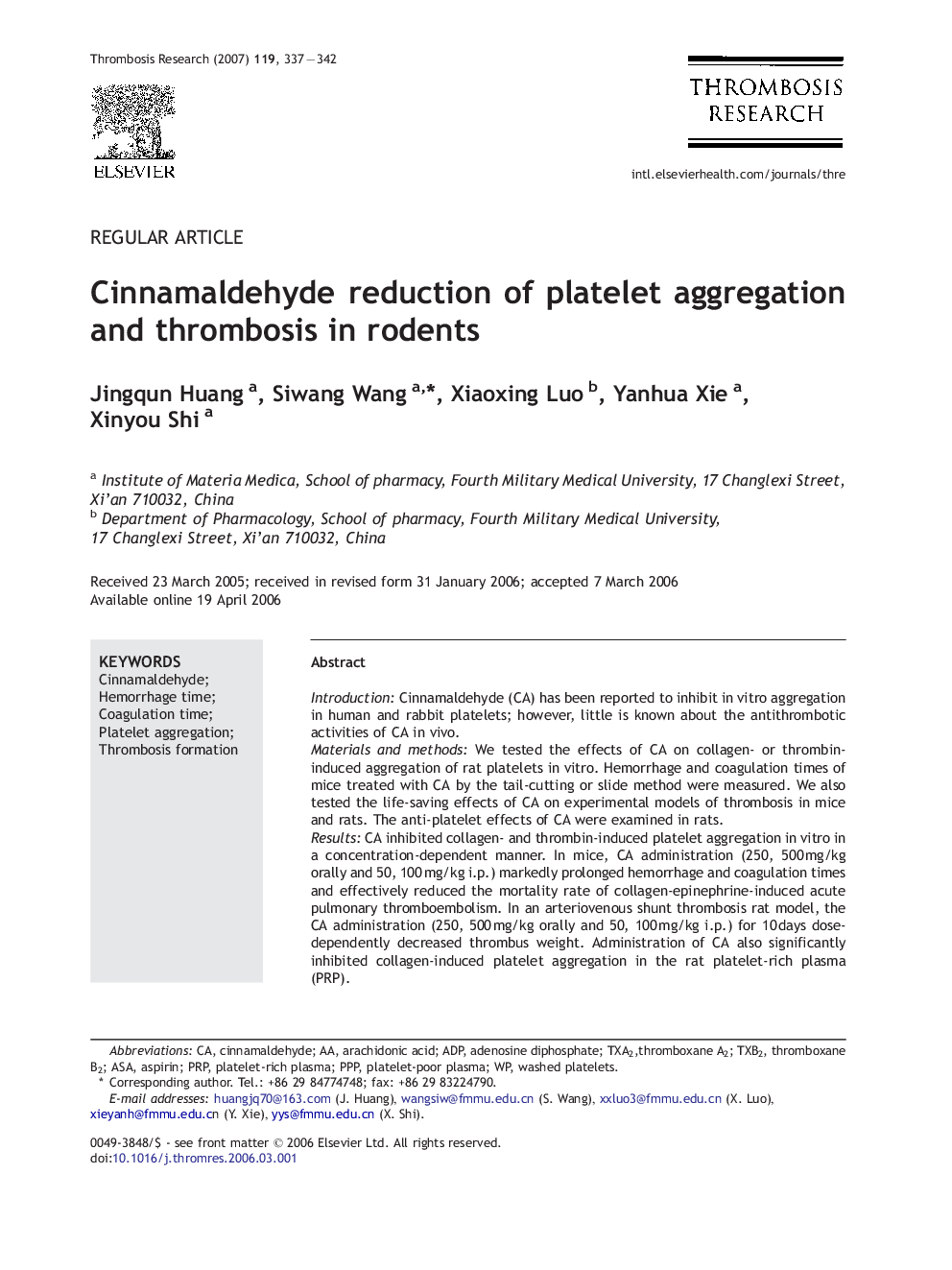| Article ID | Journal | Published Year | Pages | File Type |
|---|---|---|---|---|
| 3030194 | Thrombosis Research | 2007 | 6 Pages |
IntroductionCinnamaldehyde (CA) has been reported to inhibit in vitro aggregation in human and rabbit platelets; however, little is known about the antithrombotic activities of CA in vivo.Materials and methodsWe tested the effects of CA on collagen- or thrombin-induced aggregation of rat platelets in vitro. Hemorrhage and coagulation times of mice treated with CA by the tail-cutting or slide method were measured. We also tested the life-saving effects of CA on experimental models of thrombosis in mice and rats. The anti-platelet effects of CA were examined in rats.ResultsCA inhibited collagen- and thrombin-induced platelet aggregation in vitro in a concentration-dependent manner. In mice, CA administration (250, 500 mg/kg orally and 50, 100 mg/kg i.p.) markedly prolonged hemorrhage and coagulation times and effectively reduced the mortality rate of collagen-epinephrine-induced acute pulmonary thromboembolism. In an arteriovenous shunt thrombosis rat model, the CA administration (250, 500 mg/kg orally and 50, 100 mg/kg i.p.) for 10 days dose-dependently decreased thrombus weight. Administration of CA also significantly inhibited collagen-induced platelet aggregation in the rat platelet-rich plasma (PRP).ConclusionsThe results demonstrate that CA may be a promising antithrombotic agent, and its antithrombotic activity may be due to anti-platelet aggregation activity in vitro and in vivo.
